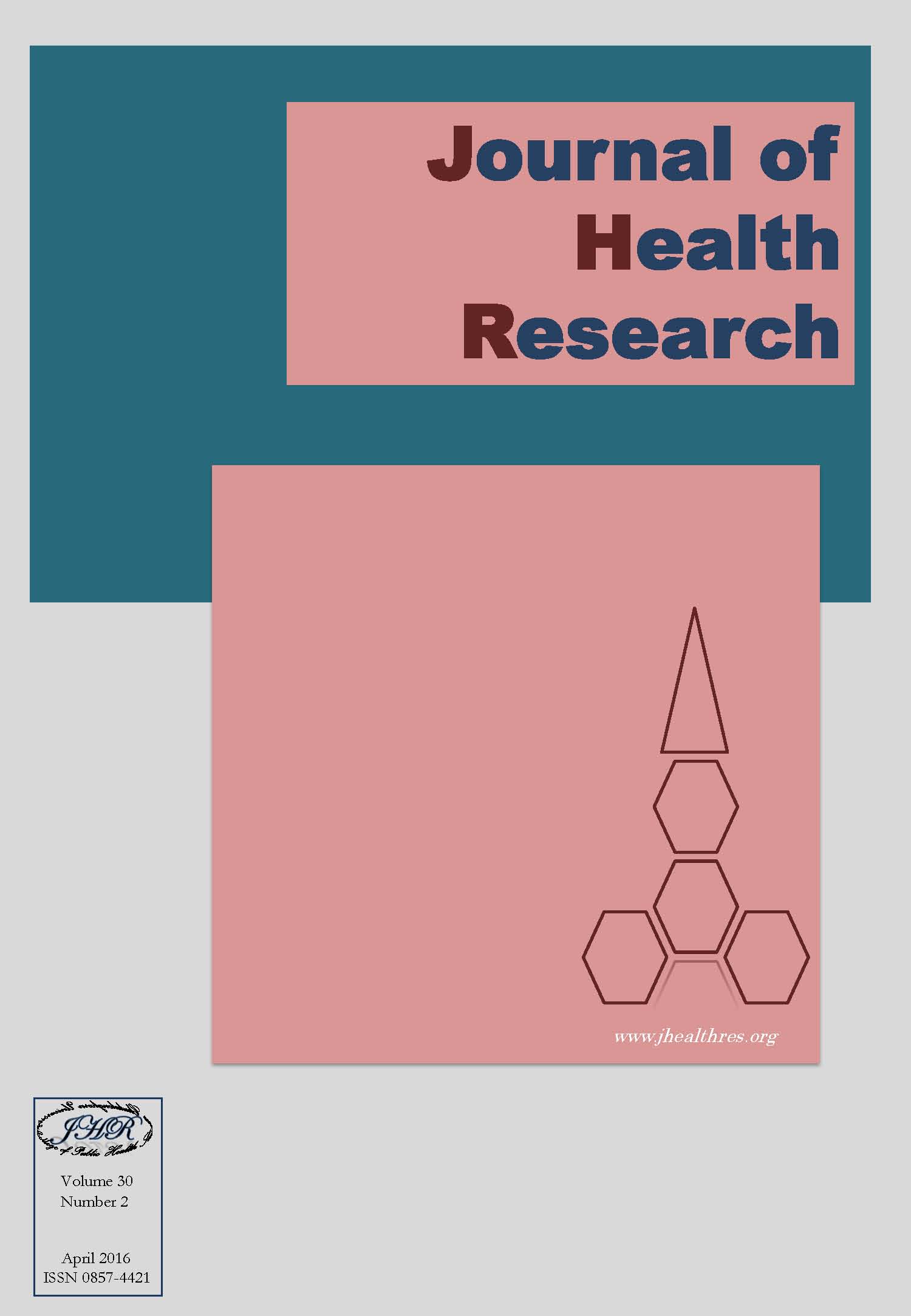Dietary intake of high school girls aged 15-18 years in Nakhon Si Thammarat province, Thailand
Keywords:
Diet, Adolescent, Nutritional status, High school girl, ThailandAbstract
Background: Adequate dietary intake is a core lifestyle recommendation for the prevention of disease in adult and adolescent populations. In Thailand, about 10% of high school children aged 15-18 years are malnourished. This paper reports a study of inadequate dietary intake of high school girls aged 15-18 years.
Methods: This cross-sectional study was designed as a population-based survey of a sample group of high school girls. Surveys were conducted in 2013 (n=247) in Thasala Prasitsuksa School, Thasala District, Nakhon Si Thammarat Province, Thailand. Dietary intake of food was estimated from one 24- hour dietary recall. Demographic data such as age, body mass index (BMI), and religion were also collected.
Results: The mean habitual daily energy intake of the sample group was 1,470.6 kilocalories. The mean levels of protein, fat, carbohydrate, dietary fiber, cholesterol, vitamin A, carotene, vitamin B1, vitamin B2, vitamin C, sodium, potassium, calcium, phosphorous, iron, and zinc intake per day were 50.5 g, 34.3 g, 239.4 g, 2.8 g, 142.6 mg, 481.9 µg, 297.9 µg RAE, 0.7 mg, 1.50 mg, 19.9 mg, 644.0 mg, 274.2 mg, 465.8mg, 624.4 mg, 7.0 mg, and 1.1 mg, respectively.
Conclusions: Macronutrient and micronutrients intake were lower than the recommended range in the majority of the sample group, especially dietary fiber, which was low in 99% of the subjects. However, mean cholesterol intake was within the recommended range. Inadequate food intake in adolescent girls is a serious concern since they are the next generation of the Thai population. Implementation of government programs to ensure food intake that meets standard nutritional requirements is recommended.







